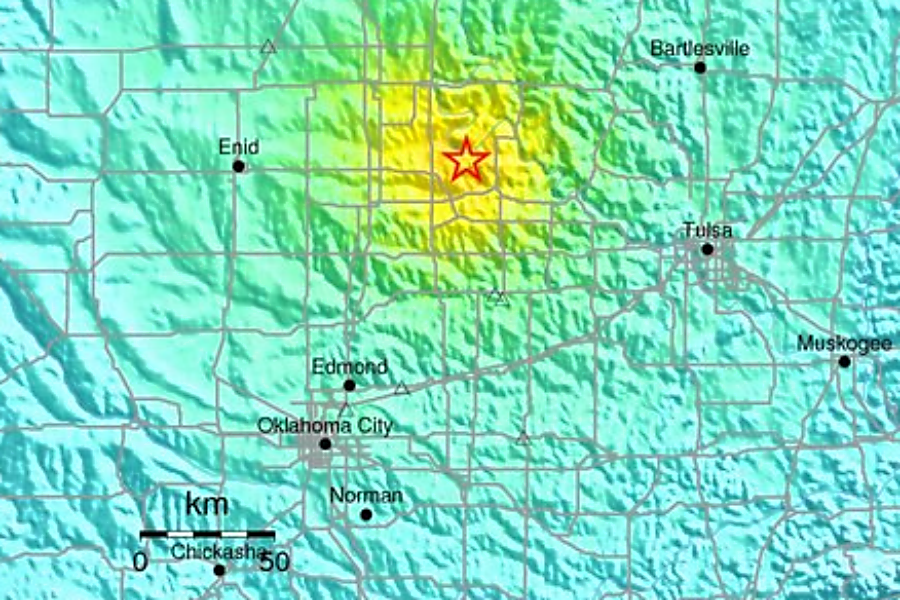Strong earthquake shakes Oklahoma. Drilling induced?
Loading...
| Pawnee, Okla.
One of Oklahoma's largest earthquakes on record rattled other parts of the Midwest on Saturday from Nebraska to North Texas, and likely will turn new attention to the practice of disposing oil and gas field wastewater deep underground.
The United States Geological Survey said a 5.6 magnitude earthquake happened at 7:02 a.m. Saturday in north-central Oklahoma, a key energy-producing region. That matches a November 2011 quake in the same region.
Geologists say damage is not likely in earthquakes below magnitude 4.0; no major damage was immediately reported Saturday.
People in Kansas City and St. Louis, Missouri; Fayetteville, Arkansas; Des Moines, Iowa; and Norman, Oklahoma, all reported feeling the earthquake. Dallas TV station WFAA tweeted that the quake shook their studios, too.
Saturday's quake was centered about 9 miles northwest of Pawnee, Oklahoma, which has a population of about 2,200. Earlier this week, the same spot, which is about 70 miles northeast of Oklahoma City, saw a magnitude 3.2 temblor.
In 2008, there were just two earthquakes that measured 3.0-magnitude or greater. In 2015, there were 890, according to the USGS.
An increase in magnitude 3.0 or greater earthquakes in Oklahoma has been linked to underground disposal of wastewater from oil and natural gas production. State regulators have asked producers to reduce wastewater disposal volumes in earthquake-prone regions of the state. Some parts of Oklahoma now match northern California for the nation's most shake-prone, and one Oklahoma region has a 1 in 8 chance of a damaging quake in 2016, with other parts closer to 1 in 20.
A cluster of quakes in northwestern Oklahoma this year included a magnitude 5.1 earthquake, and several 4.7 quakes were felt last fall before regulators stepped in to limit disposal activity.
Sean Weide in Omaha, Nebraska, told The Associated Press that he'd never been in an earthquake before and thought he was getting dizzy. Weide said he and one of his daughters "heard the building start creaking" and said it "was surreal."
Saturday's quake comes at a time when Oklahoma has taken steps to more closely regulate the practices of oil extraction companies.
As The Christian Science Monitor reported last month, Oklahomans have experienced 110 fewer earthquakes measuring 3.0 on the Richter scale or more this year than last year, according to the US Geological Survey, which has measured just 448 earthquakes thus far this year, compared to 558 by this time last year.
Geologists tentatively attribute this decrease in tremors to increased regulations on the fracking and oil extraction industries, whose wastewater disposal practices have wreaked seismic havoc in Oklahoma and other states. Still, experts caution, it's too early to tell if the quake swarms have been permanently quelled.
“Steps to reduce waste water injection were a necessary and prudent step for Oklahoma to take,” USGS geophysicist George Choy tells The Christian Science Monitor in a telephone interview. “But the reduction has been taking place for only a few months.”







